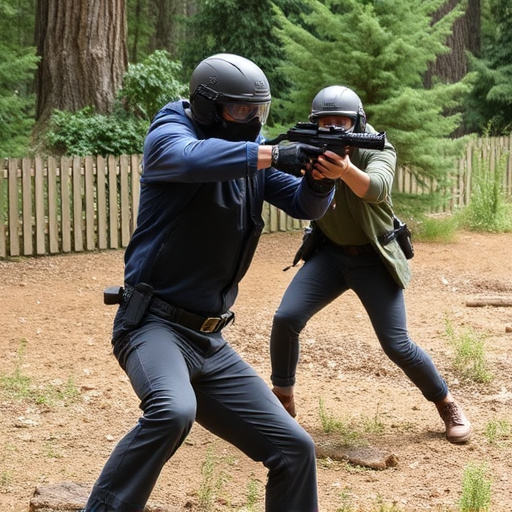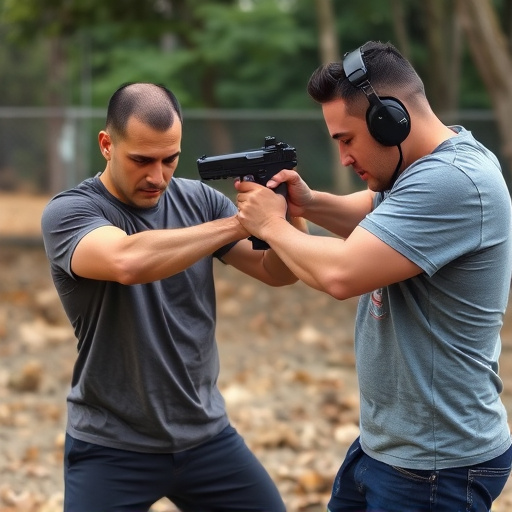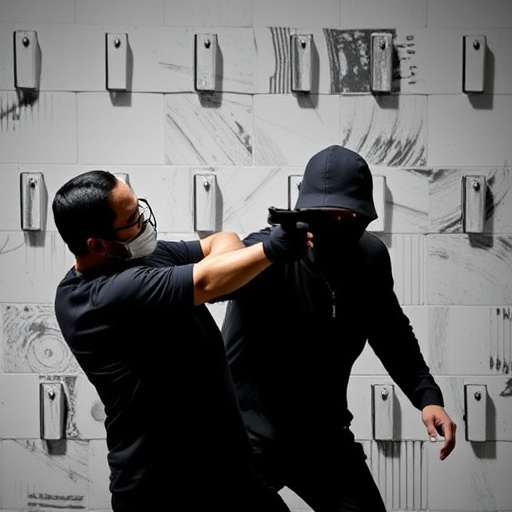The most powerful legal stun weapons harness electric pulses within 20-150 kHz to temporarily paralyze assailants while adhering to voltage limitations (up to 120,000 volts). These devices balance public safety and personal protection with adjustable settings and durable designs. Effective self-defense requires mid-range pulse rates for optimal shock without increasing risks of muscle pain or nerve damage. Rigorous testing and user training are crucial for responsible use.
Stun guns, a popular self-defense tool, utilize electrical pulses to incapacitate assailants. But what makes one device more effective than another? The key lies in pulse frequency. This article delves into the science behind electrical pulse frequency in stun guns, exploring how it impacts effectiveness and safety. We’ll also uncover the most powerful legal stun weapons available, guided by an understanding of pulse rate limitations and testing methodologies for optimal electrical delivery.
- Understanding Stun Gun Electricity: The Role of Pulse Frequency
- Legal Limits and Most Powerful Stun Guns on Market
- How Pulse Rate Impacts Stun Effectiveness and Safety
- Testing and Safety Measures for Optimal Electrical Deliveries
Understanding Stun Gun Electricity: The Role of Pulse Frequency

Stun guns, considered among the most powerful legal self-defense weapons, utilize electric pulses to temporarily incapacitate an assailant. The effectiveness of this disruption hinges critically on pulse frequency—the number of electrical pulses delivered per second. Higher frequencies generally result in more potent shocks, as each successive pulse builds upon the previous one, amplifying the overall impact. This cumulative effect can cause severe muscle contractions and disorientation, rendering the target temporarily helpless.
In the context of stun guns, pulse frequency is measured in kilohertz (kHz). Most effective models operate within a range of 20 to 150 kHz, with specific energies ranging from 40,000 to 120,000 volts. This wide spectrum allows users to balance power with safety, ensuring that the weapon delivers enough jolts to subdue an attacker while adhering to legal guidelines governing stun device usage.
Legal Limits and Most Powerful Stun Guns on Market

While the effectiveness of a stun gun depends on factors like voltage, current, and pulse width, legal restrictions also play a crucial role in determining what’s available to the public. The most powerful legal stun weapons are those that fall within the permissible voltage range set by various jurisdictions. In many countries, the upper limit for personal defense stun guns is around 1200 volts. However, some regions have higher or lower limits, reflecting a balance between public safety and individual rights.
Among the most powerful stun guns on the market today, you’ll find models that deliver precisely targeted electrical pulses capable of temporarily disabling an assailant. These devices often boast advanced features like adjustable voltage settings, durable designs, and compact sizes, making them popular choices for self-defense enthusiasts and professionals alike. Despite their power, it’s essential to remember that legal limits ensure these tools remain accessible and safe for responsible users.
How Pulse Rate Impacts Stun Effectiveness and Safety

The pulse rate, or the number of electrical pulses per second emitted by a stun gun, plays a significant role in determining its effectiveness and safety as a self-defense tool. Higher pulse rates generally result in more powerful stun effects, as each pulse delivers an intense electric current that disrupts the nervous system, causing muscle contractions and temporary incapacitation. This makes them particularly effective for neutralizing attackers quickly, especially in close-quarters encounters.
However, safety is a paramount concern when considering any weapon. While higher pulse rates can enhance stun performance, they also contribute to energy consumption and potentially increase the risk of side effects like muscle pain or nerve damage over time. Therefore, choosing the most powerful legal stun weapons involves striking a balance between raw power (pulse rate) and user safety. Opting for a mid-range pulse rate that delivers an effective shock without compromising safety measures ensures users gain the advantage they need while minimizing potential drawbacks.
Testing and Safety Measures for Optimal Electrical Deliveries

Testing and safety measures are paramount when it comes to ensuring optimal electrical deliveries from stun guns, especially with the popularity of the most powerful legal stun weapons. Manufacturers employ rigorous testing protocols to guarantee their devices deliver precise and effective jolts while minimizing risk to users and bystanders. These tests often involve simulating various scenarios, including different muscle groups and body types, to ensure consistent performance across diverse individuals.
Safety features such as smart triggers and control circuits are integrated into modern stun guns to prevent accidental activations and misuses. Additionally, proper training in the use of these devices is crucial for users to understand their capabilities and limitations, ensuring they deploy the most powerful legal stun weapons responsibly and effectively in self-defense situations.
In understanding the electrical pulse frequency of stun guns, we’ve explored how it influences both effectiveness and safety. The quest for the most powerful legal stun weapons necessitates a careful balance between these factors. By delving into the science behind pulse rates, from their impact on immobilization to safety measures, users can make informed decisions when choosing self-defense tools. Staying within legal limits while maximizing the stun gun’s potential ensures personal safety and peace of mind in an increasingly unpredictable world.
